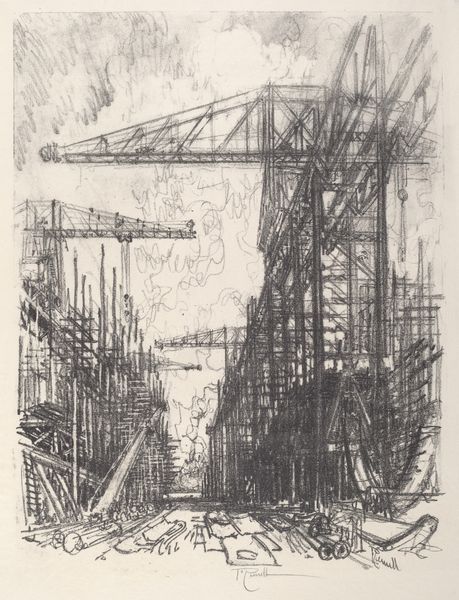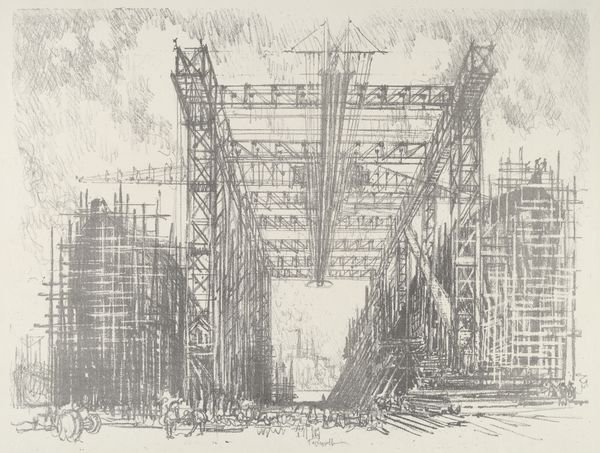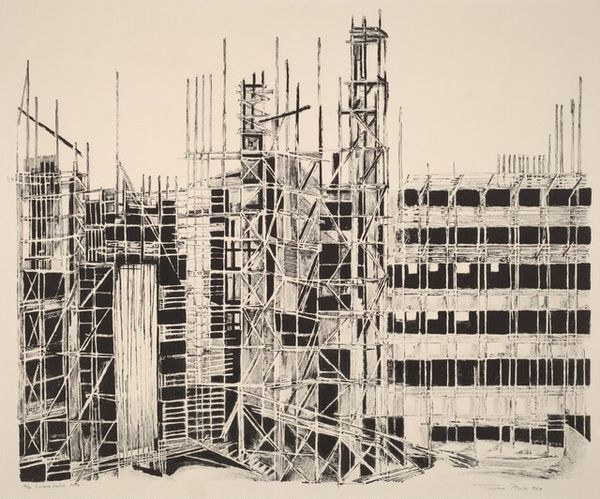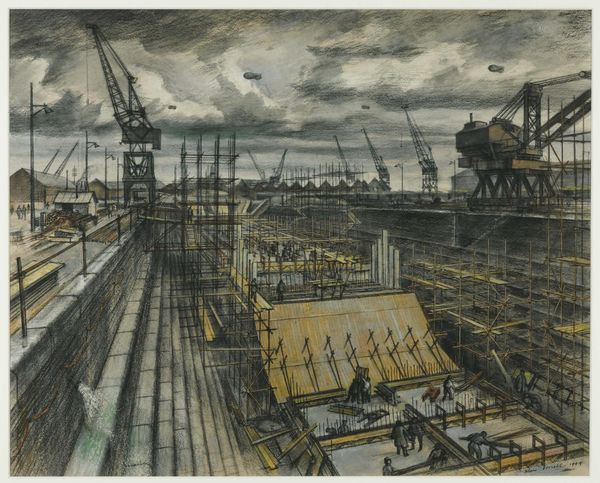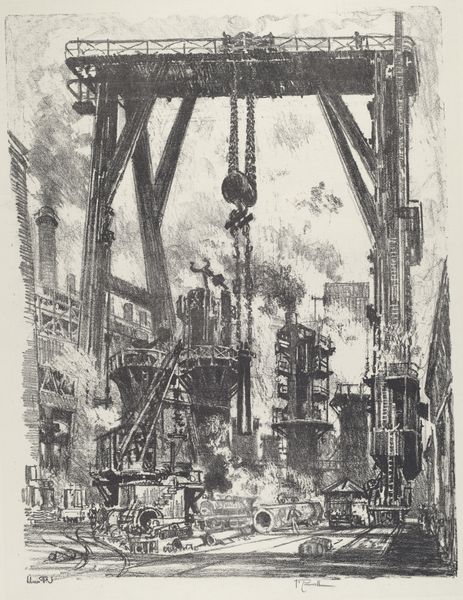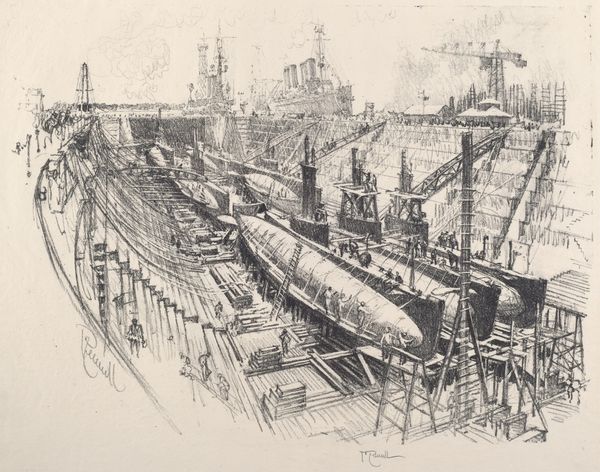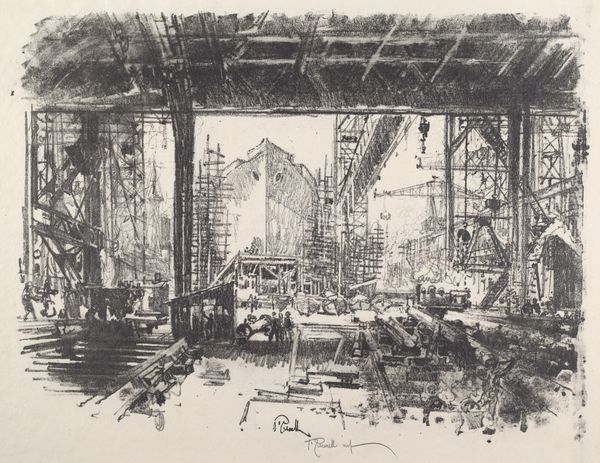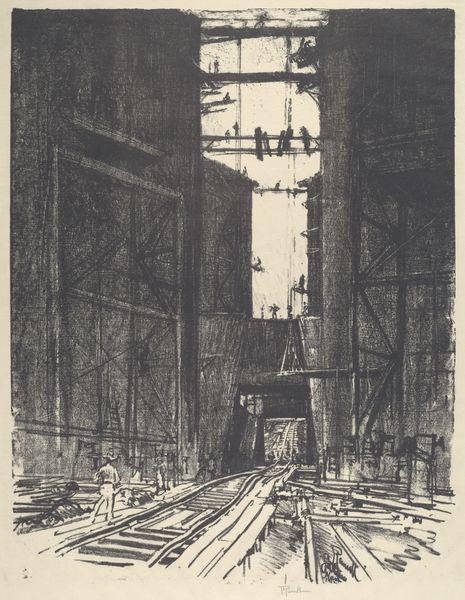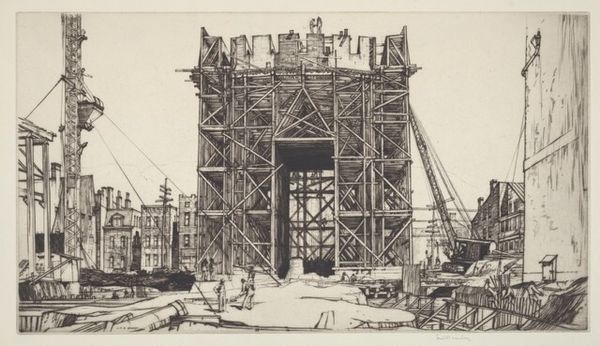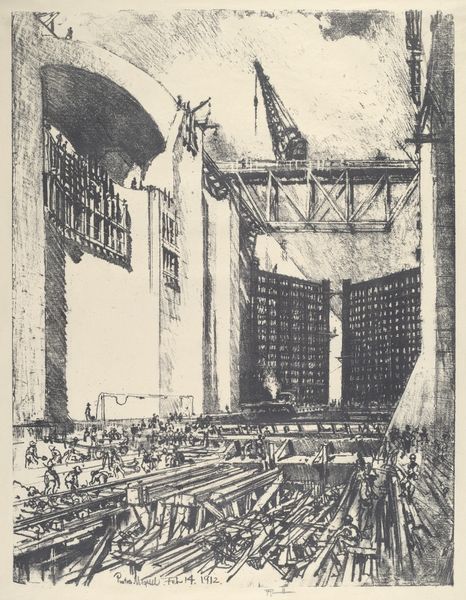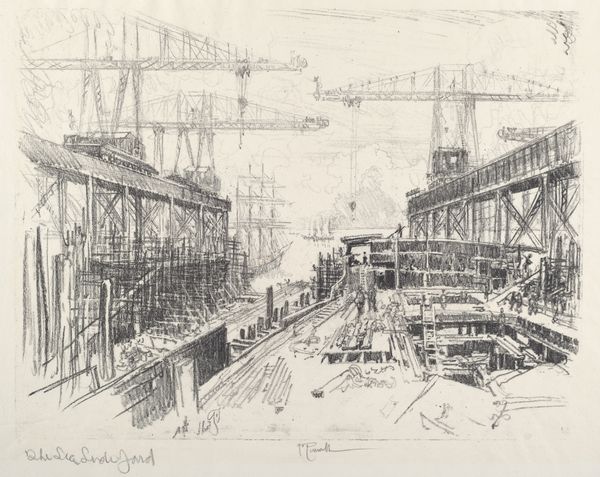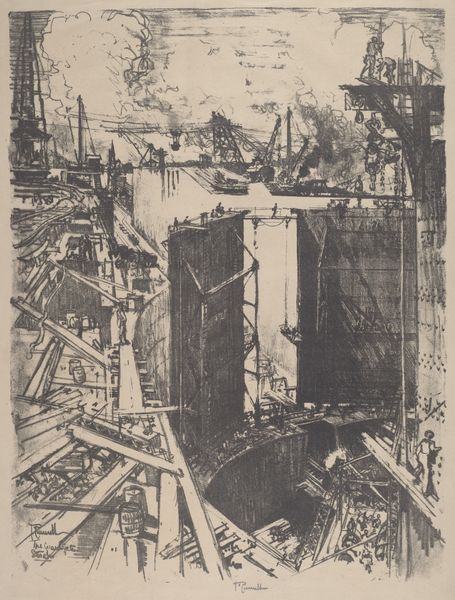
drawing, print, engraving
#
drawing
# print
#
geometric
#
cityscape
#
engraving
Copyright: National Gallery of Art: CC0 1.0
Editor: This is Joseph Pennell’s 1917 print, "The Keel." The composition is very dense, a jumble of lines forming a shipyard and this massive ship under construction. I find it simultaneously overwhelming and awe-inspiring. How do you interpret this work, particularly within its historical context? Curator: The overwhelming nature is key, I think. Consider the time: 1917, during the First World War. Pennell wasn't just depicting a shipyard; he was capturing the frenetic energy of a nation mobilized for war. The sheer scale hints at industrialization’s effects on labor, on resources, and on the very landscape. The city, too, became a site of production. What kind of stories do you think these spaces and people could tell us about production at this moment in history? Editor: It speaks to a kind of utilitarian patriotism, I suppose? Everyone had to pitch in somehow for the "greater good". Were the workers adequately supported? Curator: Exactly! It’s critical to consider the workforce. Who were these laborers? What were their working conditions? The print elides the faces and lived experiences of the individuals doing this labour, presenting it as part of a broader war narrative that can be interpreted as almost heroic. However, were the individual experiences so glowing? Think about issues of class, race, and gender within these industries at that time. It wasn’t an even playing field. Editor: That's true; the romanticism occludes some serious realities. The focus is almost entirely on this abstract idea of industrial strength, and the human cost gets buried. Curator: Precisely. And Pennell, like many artists of his time, contributed to this kind of visual propaganda, whether consciously or not. Recognizing that allows us to unpack not just the image itself, but also the narratives it perpetuates and the voices it silences. Editor: That reframes the entire image for me. I had seen a monument to progress, but it is equally a complex document of wartime social engineering. Thanks, this was insightful. Curator: The pleasure is all mine. Art always presents us with the opportunity to reassess established historical perspectives, offering, perhaps, more socially conscious interpretations.
Comments
No comments
Be the first to comment and join the conversation on the ultimate creative platform.
